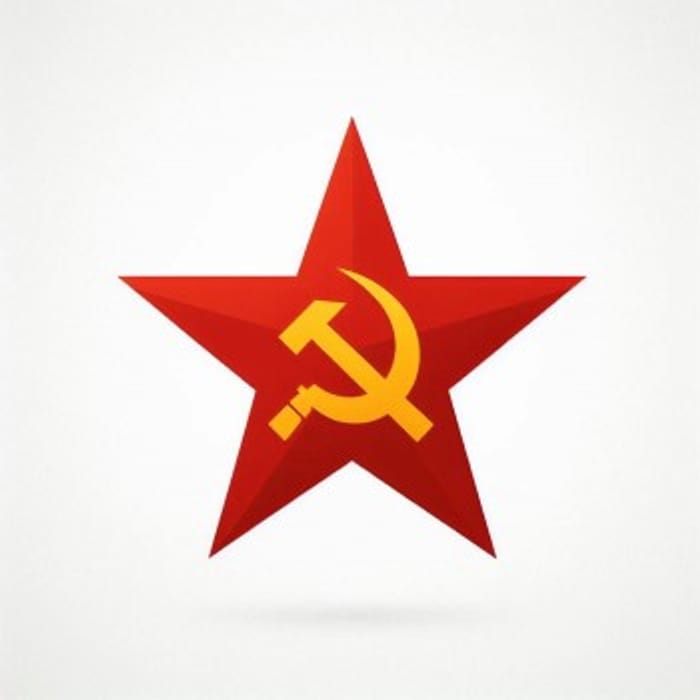How did the world we live in come to be this way? There's one historical event that's crucial to understanding this journey: the 'Cold War.' Through the lens of the Cold War era, we can gain insights into how the 20th century took shape. Understanding this period may also help us grasp how the current global political and social landscape was formed.
The Beginning of the Cold War: A Divided World
Following the end of World War II, the world became divided into two blocs, centered around the United States and the Soviet Union. This marked the beginning of the Cold War.
The United States led nations advocating for liberal democracy and capitalism, while the Soviet Union led those promoting communism. These two blocs held opposing ideologies and systems, viewing each other as adversaries.
The Cold War officially began on March 12, 1947, with U.S. President Truman's announcement of the Truman Doctrine in a speech to Congress.President Truman argued that Greece and Turkey were facing threats from communist forces backed by the Soviet Union. He declared that the U.S. would provide military and economic aid to support these nations.
Subsequently, the U.S. and the Soviet Union competed to expand their global influence. They strengthened their militaries, secured alliances, and sought to curtail the other's influence. They also engaged in fierce competition in the field of space exploration.

Liberalism
The Nuclear Arms Race: Seeking a Balance of Destruction
The tension between the two superpowers escalated into a nuclear arms race. Nuclear weapons were the most powerful weapons ever created by humanity, capable of destroying countless lives and cities with a single explosion.
The United States was the first nation to develop nuclear weapons. On August 6, 1945, it dropped an atomic bomb on Hiroshima, Japan, followed by another on Nagasaki on August 9th. These two attacks forced Japan to surrender, bringing World War II to a close.
The Soviet Union also embarked on its own nuclear weapons development program. On August 29, 1949, it conducted its first atomic bomb test in Semipalatinsk, Kazakhstan. With both the U.S. and the Soviet Union now possessing nuclear weapons, the entire world lived under the shadow of a potential nuclear war.
In this precarious situation, both sides adopted a strategy known as 'Mutually Assured Destruction.' This strategy aimed to deter nuclear war by creating a scenario where if one side used nuclear weapons, the other would retaliate with its own nuclear arsenal.
Key Events: The Berlin Wall and the Cuban Missile Crisis
The major events of the Cold War era were largely intertwined with the rivalry between the United States and the Soviet Union. Among them, the Berlin Blockade and the Cuban Missile Crisis stand out.
- The Berlin Wall:The Berlin Blockade, which lasted from 1948 to 1961, stemmed from the Soviet Union's opposition to the Western Allies (the United States, United Kingdom, and France) controlling Berlin, the capital of Germany. Initially, it involved blocking access to Berlin, but later, a wall was erected within the city to separate East Berlin from West Berlin. This event exemplifies the severity of the Cold War and served as a source of heightened tension between East and West for decades.
- The Cuban Missile Crisis:The crisis that erupted in October 1962 when the Soviet Union attempted to install intermediate-range ballistic missile launch sites in Cuba was one of the most dangerous moments of the Cold War. The U.S. viewed this as a threat to its national security and responded by imposing a naval blockade around Cuba and demanding the removal of the missile sites. After thirteen days of tense standoff, the crisis ended when the Soviet Union agreed to withdraw the missiles.

Communism
Battlegrounds of Conflict: Proxy Wars and Espionage
During the Cold War, the U.S. and the Soviet Union primarily employed proxy wars and espionage to checkmate each other, rather than engaging in direct military confrontations.
- Proxy Wars:The two superpowers intervened in conflicts in third-party nations by supporting their respective allies or satellite states. These proxy wars included the Korean War, Vietnam War, and Angolan Civil War, among others..
- Espionage:Both countries also monitored and disrupted each other through intelligence gathering and covert operations. Intelligence agencies such as the CIA and KGBoperated worldwide, collecting information about the other's military installations, scientific and technological advancements, and economic data. Techniques like double agents, code-breaking, and wiretapping were widely employed.
The Cold War in Culture and Art: Propaganda and Response
The Cold War extended beyond politics and the military sphere, profoundly influencing popular culture and art.
- Propaganda:The U.S. and the Soviet Union utilized various media, including film, music, and literature, to promote their respective values and systems. Hollywood movies symbolized freedom and democracy, while Soviet montage techniques emphasized socialist realism. Pop music was also used as a tool in the ideological struggle. The Beatles and Rolling Stones represented Western youth culture, while Svetlana Zakharova sang songs for state-run broadcasts to promote the Soviet system.
- Response:Some artists took a critical approach to the realities of the Cold War or presented alternative perspectives. Andy Warhol's 'Mao' series repeatedly used the image of Chinese Communist leader Mao Zedong to explore power and iconography. Aleksandr Solzhenitsyn's novel 'The Gulag Archipelago' exposed the realities of Soviet labor camps, garnering international attention.
The End of the Cold War: The Fall of the Iron Curtain
A series of events from 1989 to 1991 marked the end of the Cold War.
- The Fall of the Berlin Wall (1989):Mass protests by East German citizens and support from West Germany led to the dismantling of the Berlin Wall. This event served as a catalyst for German reunification and the beginning of the end of the division of Europe.
- The Malta Summit (1989):U.S. President George H.W. Bush and Soviet leader Mikhail Gorbachev met and declared the end of the Cold War. At this summit, both countries pledged to reduce nuclear weapons and engage in peaceful cooperation.
- The Dissolution of the Soviet Union (1991):The failure of Gorbachev's reform policies and internal conflicts led to the collapse of the Soviet Union, resulting in the emergence of independent states, including Russia. This effectively ended the communist bloc, one of the primary forces of the Cold War era.
The Post-Cold War World: Navigating a New Order
The end of the Cold War brought about significant changes to the global order.
- The Dawn of the Post-Cold War Era:The bipolar world dominated by the U.S. and Soviet Union during the Cold War collapsed, and a diverse range of countries began to exert influence on the international stage.
- The Rise of Multipolarity and Regionalism:As the influence of the U.S. and Soviet Union waned, new powers emerged, including China, the European Union (EU), and Japan. Regionalism also strengthened in various parts of the world.
- The Enhanced Role of International Organizations:The United Nations (UN), International Monetary Fund (IMF), and World Trade Organization (WTO) have assumed greater responsibility for promoting global peace and stability, as well as economic development.
- The Advancement of Information and Globalization:The development of information and communication technologies, including the internet and artificial intelligence, has spurred the progress of information technology. Improvements in transportation and communication have accelerated globalization. These changes have increased interdependence in the international community and exert influence on various domains, including politics, economics, and culture.
Lessons from the Cold War and Its Impact on the Modern World
The Cold War was one of the most intense ideological conflicts and wars in human history. Although it didn't involve direct military confrontation, its repercussions were felt worldwide, resulting in numerous casualties and property damage. However, the Cold War also offers valuable lessons.
- The Importance of Balance of Power:The Cold War demonstrated that peace is achievable when a balance of power is maintained among superpowers. Had one side held overwhelming power, the world might have experienced even greater turmoil.
- The Importance of Diplomacy and Negotiation:Throughout the Cold War, the U.S. and Soviet Union harbored mistrust and always considered military threats. However, they also consistently sought to resolve issues through dialogue and negotiation. The Cuban Missile Crisis and the Intermediate-Range Nuclear Forces Treaty (INF) are prime examples of this.
- The Perils of Ideological Conflict:The Cold War underscored the dangers of ideological conflict. Conflicts and hatred between groups with differing ideologies often disregard pragmatic concerns and compel individuals to make extreme choices.
Conclusion
By reflecting on the history of the Cold War, we can prepare for the future and avoid repeating past mistakes. We should also never forget that the freedom and peace we enjoy today are the result of countless sacrifices and maintain a constant sense of gratitude.


Comments0